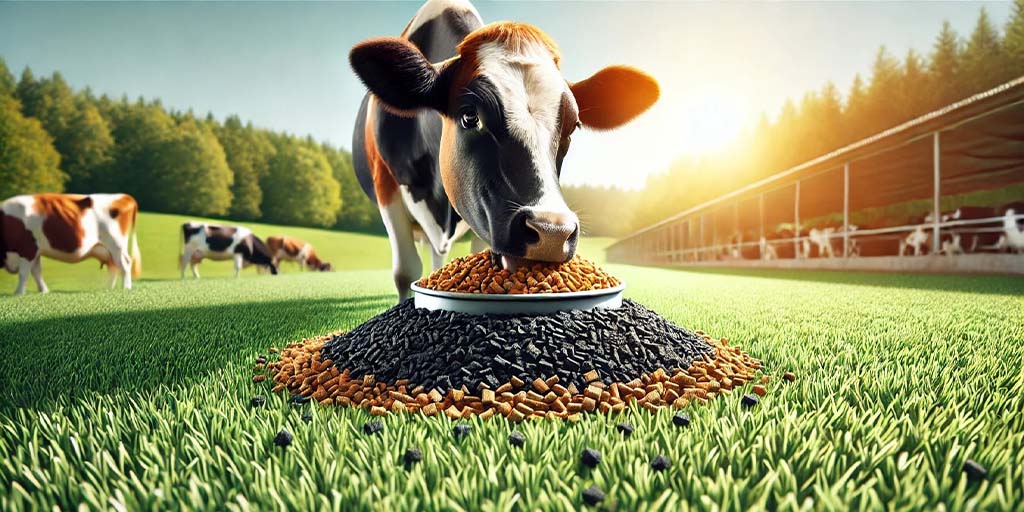Biochar offers several unique benefits as a feed additive compared to other common additives.
Here’s a comparative look at how biochar stacks up against other feed additives:
Biochar vs. Activated Charcoal
- Production Process:
- Biochar: Produced through pyrolysis of organic biomass at lower temperatures (around 300-700°C) in a low-oxygen environment[1].
- Activated Charcoal: Produced at higher temperatures (up to 900°C) and often involves chemical activation to increase its surface area[1].
- Applications:
- Biochar: Used for improving gut health, nutrient absorption, and reducing methane emissions[2].
- Activated Charcoal: Primarily used for detoxification and treating poisoning due to its high adsorption capacity[1].
- Cost:
- Biochar: Generally cheaper to produce, especially when using agricultural waste as feedstock[1].
- Activated Charcoal: More expensive due to the higher production costs and additional activation processes[1].
Biochar vs. Probiotics
- Mechanism of Action:
- Biochar: Enhances gut health by providing a habitat for beneficial microbes and adsorbing toxins[2].
- Probiotics: Introduce live beneficial bacteria to the gut to improve microbial balance and digestion[3].
- Benefits:
- Biochar: Improves nutrient absorption, reduces methane emissions, and detoxifies the digestive tract[2].
- Probiotics: Enhance gut flora, improve digestion, and boost the immune system[3].
- Stability:
- Biochar: Stable and does not degrade over time, providing long-term benefits[2].
- Probiotics: Live organisms that can be sensitive to storage conditions and may require refrigeration[3].
Biochar vs. Enzymes
- Function:
- Biochar: Adsorbs toxins and provides a habitat for beneficial microbes, indirectly improving digestion[2].
- Enzymes: Directly break down specific feed components (e.g., fibers, proteins) to improve digestibility[3].
- Targeted Use:
- Biochar: Broad-spectrum benefits for gut health and nutrient absorption[2].
- Enzymes: Target specific digestive issues, such as improving fiber digestion in ruminants[3].
- Cost:
- Biochar: Generally cost-effective, especially when produced from agricultural waste[1].
- Enzymes: Can be expensive due to the specificity and production costs[3].
Research and Case Studies
- Biochar: Studies have shown that biochar can reduce methane emissions by up to 10.7% in cattle and improve nutrient absorption[2].
- Probiotics: Research indicates that probiotics can enhance gut health and immune function, but their effectiveness can vary based on the strains used[3].
- Enzymes: Enzyme additives have been shown to improve feed efficiency and nutrient digestibility, particularly in monogastric animals[3].
Conclusion
Biochar stands out as a versatile and cost-effective feed additive with broad-spectrum benefits for livestock health and environmental sustainability. While other additives like activated charcoal, probiotics, and enzymes offer specific advantages, biochar’s unique properties make it a valuable addition to animal feed, particularly for improving gut health, nutrient absorption, and reducing methane emissions.







